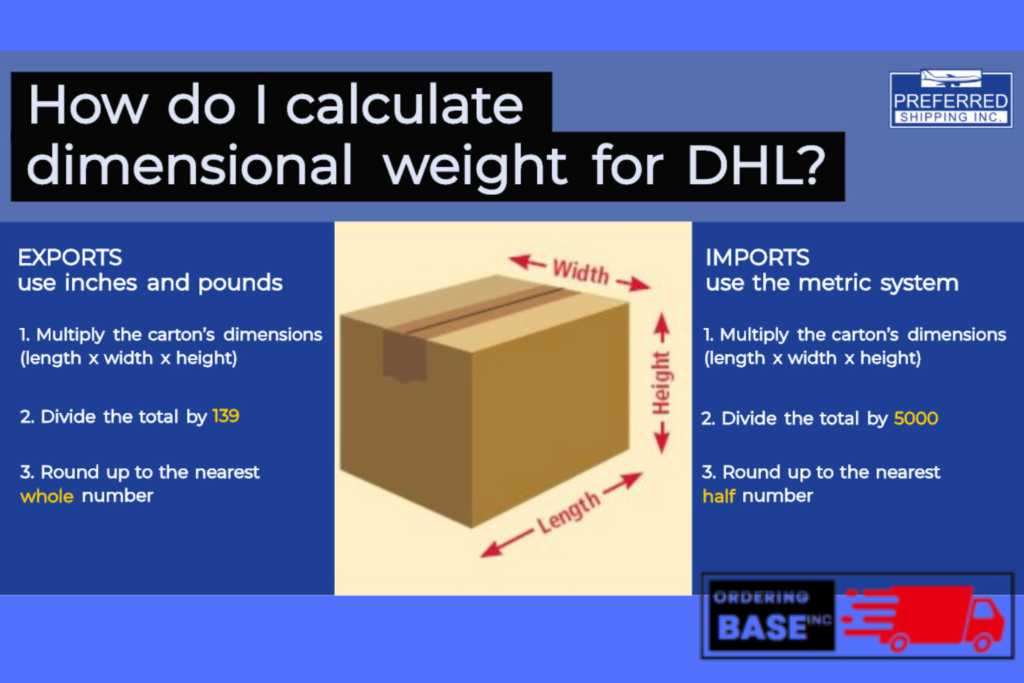Dimensional weight, also known as volumetric weight, is a crucial factor in the logistics and shipping industry. It determines the cost of shipping a package based on its size rather than its actual weight. Understanding dimensional weight calculation is essential for businesses to optimize shipping costs and improve efficiency. This article delves into the intricacies of dimensional weight and its calculation methods.

Introduction to Dimensional Weight
Dimensional weight refers to the amount of space a package occupies in relation to its actual weight. Carriers use this metric to ensure fair pricing for shipping services. For example, a lightweight package that takes up a significant amount of space in a delivery vehicle incurs higher costs due to reduced cargo space for other parcels.
Factors Affecting Dimensional Weight Calculation
Several factors influence dimensional weight calculation, including the dimensions of the package, carrier policies, and industry standards. Package dimensions play a crucial role, as larger packages with lighter contents can result in higher dimensional weights.
Formula for Dimensional Weight Calculation
The formula for dimensional weight calculation varies among carriers but typically involves multiplying the package’s length, width, and height (in inches) and dividing the result by a dimensional factor. This factor reflects the carrier’s density policy.
For instance, a common formula is (Length x Width x Height) / Dimensional Factor.
Comparison Between Actual Weight and Dimensional Weight
Differentiating between actual weight and dimensional weight is vital for businesses to understand their shipping costs accurately. While actual weight is the physical weight of a package, dimensional weight is calculated based on its size. Carriers determine the shipping cost based on whichever weight is higher.
Strategies to Manage Dimensional Weight Costs
To mitigate dimensional weight costs, businesses can adopt various strategies such as optimizing packaging to reduce empty space, negotiating favorable terms with carriers, and leveraging software solutions for accurate calculations.
Impact of Dimensional Weight on E-commerce Businesses
E-commerce businesses face unique challenges related to dimensional weight, especially when shipping a wide range of products. Managing dimensional weight effectively is crucial for maintaining competitive pricing and customer satisfaction.
Future Trends in Dimensional Weight Calculation
Advancements in technology are driving innovations in dimensional weight calculation, with a focus on sustainability and cost efficiency. New tools and methodologies are emerging to help businesses navigate complex shipping requirements.
Conclusion
Dimensional weight is a key consideration in modern logistics, influencing shipping costs and operational strategies. Businesses must stay informed about dimensional weight calculation methods and employ proactive measures to optimize shipping expenses while delivering exceptional service to customers.
FAQs About Dimensional Weight
- What is the dimensional factor used in calculating dimensional weight?
- The dimensional factor varies by carrier and is based on the carrier’s density policy.
- Can packaging materials impact dimensional weight?
- Yes, using oversized packaging can increase dimensional weight and shipping costs.
- Do all carriers use dimensional weight pricing?
- Most major carriers utilize dimensional weight pricing to ensure fair pricing for shipping services.
- How can e-commerce businesses optimize dimensional weight costs?
- E-commerce businesses can optimize dimensional weight costs by optimizing packaging, negotiating with carriers, and leveraging technology for accurate calculations.
-
Are there any exceptions where actual weight is prioritized over dimensional weight?
- Some carriers may prioritize actual weight over dimensional weight for certain types of shipments or under specific circumstances.
